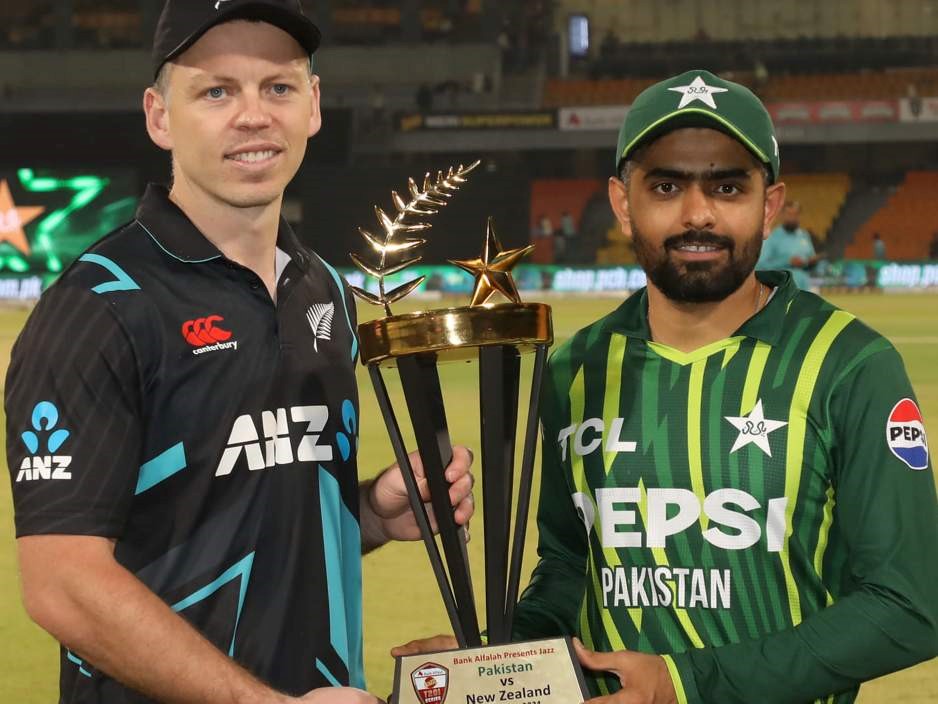Today, we bring you a comprehensive review of the Pakistan vs New Zealand series! We will discuss 4 positives and 4 negatives,
The last point will make Babar’s fans happy.
When a team wins, negatives are often overlooked. But we won’t do that because focusing on these points is crucial for World Cup preparations.

Negative Number 1 – Poor Fielding
Dropping catches is not an unfamiliar issue in Pakistan Cricket. In the four matches played, Pakistan dropped eight catches, which led to a total loss of 141 runs. The most expensive error occurred when Naseem Shah dropped Mark Chapman in the third T20, a mistake that cost the team 71 runs.
Negative Number 2 – Saim Ayub’s Poor Form
Everyone acknowledges Saim’s talent, but he has yet to translate his PSL form to the international stage. It appears he might be too focused on appearing stylish, which is harmful not just for him but for the entire team. Saim has only managed to score 106 runs in his last 11 T20I innings, with a strike rate of 119.10 and an average of 9.63. When Babar Azam was asked about Saim’s recent form, he defended him vigorously, indicating that Saim is a crucial part of his World Cup plans.
Negative Number 3 – Injury issues
Injuries to key players like Rizwan, Irfan, and Azam have completely disrupted Pakistan’s game plan. Mohammad Rizwan and Irfan Niazi, two of the fittest members of the squad, have also suffered injuries. This raises a question about the decision to send players for military-style training. It’s unusual in global sports for athletes to undergo such intense training just to improve fitness.

Negative Number 4 – Usman Khan’s Below-Average Performance
Usman Khan, renowned for being one of the top batsmen in the PSL 9, and for scoring the fastest century in its history few months back, struggled significantly in Pakistan vs New Zealand series. He managed to score only 59 runs at an average of 14.75 across four innings. Given this performance, it appears unlikely that Usman will be part of the World Cup squad. Our concerns about his ability to adapt to the middle order were validated during the Pakistan vs New Zealand series.
Also Read
Evaluating Pakistan’s T20 World Cup Batting Crisis: A Statistical Insight
Enough about the negatives, now let’s talk about the positives.
Positive Number 1 – Batting Intent
Before this series, Pakistani batters were managing a strike rate of only 114 during the 7 to 10 overs phase, which is quite low by international standards. However, in this series, they showed great improvement, boosting their strike rate to 133 during this phase. Moreover, you will be surprised to know that, Pakistani batters started their innings faster than New Zealand, surpassing them in terms of initial batting speed.

Positive Number 2 – The Eagle is Back in Form
Shaheen Shah Afridi looked to be back in his old rhythm in this series. He took 8 wickets across four innings with an economy rate of 7.38 and claimed the Player of the Series award. Impressively, Shaheen adapted his bowling plans intelligently when the pitch offered no support. Despite losing the captaincy, his performance confirmed that he remains Pakistan’s top bowler.
Positive Number 3 – Fakhar in the Middle Order
Since the 2022 World Cup, Pakistan’s middle order has ranked lowest in world cricket in terms of average and strike rate. However, this series marked a significant improvement, primarily due to Fakhar Zaman’s efforts. He scored 104 runs in two innings, with an average of 52 and a strike rate of 133. Fakhar’s performance has seemingly secured at least one middle-order spot for Pakistan.

The Most Important Point – Babar Azam’s Captaincy
In this series, Babar Azam appeared as a mature, smart, and flexible captain. He tried different combinations in both batting and bowling departments and used his players beautifully according to the situation. One proof of this is that in the last T20, Pakistan used a record 8 bowlers.
Not only this, but Babar also managed the comebacks of Amir and Imad with great ease, both of whom were returning to the team after a significant break. This demonstrates excellent leadership and is a very encouraging sign for the future. Babar Azam’s willingness to try different strategies and lineups was a positive reflection of his evolving skills as a captain.









